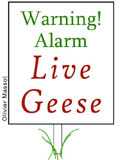- Publications:
- Newsletter:
- How-To Tutorials:
- Consumer Guides:
- Related:

Burglar-Proof Your Home
[ Family Circle Archive ]

Burglar-Proof Your Home:
A Guide to Alarm Systems
& Security Devices
By Al Ubell and Label Shulman
Published August 10, 1982 - Family Circle Magazine

You may live in a neighborhood where one in eight houses will be burglarized this year. Simple do-it-yourself measures or professional help can make your home safe.
Recently our friend Fred's house was burglarized, three hours after his family left for vacation. The thieves took jewelry, money, some silver and a pewter wine cup that had belonged to his great-grandfather. The burglar probably threw that cup away later, since it wasn't “valuable.”
And a while back our next-door neighbor's home was also broken into, robbed and vandalized. “Probably some kids looking for easy money,” the detective said. They had entered through a window they broke, gaining easy access. The neighbor, Carol, was angry and scared. “I was out of the house for only a half-hour, doing some shopping. When we first moved here 10 years ago, we didn't even think about locking our doors. Now we have to think about installing a fancy alarm system.”
In urban, suburban and rural communities, crime statistics have risen alarmingly. Depending upon where you live, the chances of your house being burglarized this year are about one in eight. Because of this, each of us needs to take measures to ensure the safety and security of our families and homes. We must consider not only the loss of possessions, especially things with sentimental value, but also the harm that can come from confronting a desperate intruder.
How secure or vulnerable is your home? How much burglar protection do you actually need, and how much do you need to spend to give yourself a sense of security? Law enforcement officers agree that most burglaries are committed by amateurs who are afraid to hang around for long; they are generally in and out in less than 10 minutes. If you can deter a thief for three to five minutes, in most cases he'll go elsewhere. Of course no home can be absolutely burglar-proof, and the expert thief after a known target is almost impossible to stop. For most homeowners, however, the idea is to make the home more secure, thereby making yourself a less likely victim of burglary, vandalism or other acts of violence.
You should also consider the replacement cost of items bought 10 years ago. For instance, that clock/radio you paid! $23 for in 1972 is now $60; the $38 gold hoop earrings, $100; the $135 portable electric typewriter, $350; the $160 35mm. SLR camera, $400; the $540 stereo Hi-Fi system, $1,400.
We believe that prevention, not paranoia, should guide you to an effective program of home and family security. This means first becoming more security conscious about your home and belongings, For instance, a flashy life style with jewels and furs on conspicuous display is an open invitation to a thief, Enjoy your possessions, but “if you've got it, don't flaunt it,” You may wind up without it, in addition, observe some simple security measures:
Low Cost/No-Cost Ways To Protect An Empty House
- Check and lock doors when leaving your home.
- Have neighbors or relatives watch your house. Also inform local police how long you'll be away so they, too, can keep an eye on your home.
- Organize a neighborhood Crime Watch for an effective, simple self-help program. (Ask your police department for more information.)
- Stop delivery of mail (or have a neighbor take it in every day), newspapers, milk, etc.
- Arrange to have your lawn mowed or snow shoveled.
- Install three or four timers that turn lamps on at dusk and off at bedtime. Do NOT have all lights on and off at the same times; this is too obvious to a potential burglar.
- Turn your telephone bells down so they cannot be heard from outside. Also install a radio or TV timer to turn on and off during the day and evening.
- Have a neighbor change window shade and curtain positions at least once a day. Install a photoelectric cell switch or socket on all outdoor lighting. Good lighting (front, rear and side yards; garage) helps keep prowlers away.
- Lock ladders and outdoor furniture in a shed or garage to prevent their use as steps to an upper-level window.
- Don't advertise a coming vacation in the society section of the local newspaper.
- Secure each outside door with a dead-bolt lock, and sliding doors with a cut-off broom handle placed in the inside track, with a Charley bar or with a spring loaded latching device designed for this purpose (an easy do-it-yourself job).
- Make sure all windows have strong double latch protection. In double hung windows the secondary latch can be a nail or pin placed in a downward slanting hole you have drilled through both frames where the frames overlap.
- In apartments and some homes consider the installation of fire department - approved security gates for windows accessible to fire escapes and the street.
- All foundation shrubs and trees should be kept low trimmed, so as not to provide cover and camouflage for a burglar.
- With an electric engraving tool, mark valuable TV sets, stereos, jewelry, etc. with your name or any other label. (Many communities have a Project Identification program that provides the tools. Local police will keep a list of your engraved valuables.)
- Don't keep spare keys in mailboxes, under mats, on top of doorframes or in planters. Burglars know all the “good” spots. Give a spare key to a trusted neighbor instead.
- Don't tag keys with your name or address.
- Rent a safe-deposit box in a bank. It's more secure than a home safe.
- Agree to watch your neighbors' homes and have them watch yours.
If you decide that you need additional protection, you may want to consider the installation of a home security alarm system. This could be simple or complex: from a $12 battery operated vibration alarm that hangs on the inside of an entry door (it gives an alarm if the door is touched or jarred) to a $10,000 custom designed home security system (with space-age electronic components chat secure against burglary. detect fire and smoke, summon medical assistance), (Set “Dollar-Wise Guide to Burglar-Proof Devices, ” below.) Before you can determine the kind of security system you need, the following things must be considered:
- Access doors. Door break-ins are the most common type of break-in in homes and apartments,
- Windows, Each one presents a possible means of entry, especially chose at ground and basement level and those opening on terraces, porches and roofs. Windows at upper levels can also be vulnerable (when reached by climbing a tree or a ladder thoughtlessly left outside).
- How much can you, will you, spend for your particular “peace of mind”? Professionals in law enforcement and in the home security industry suggest that 1% - 2% of the combined worth of your house and personal possessions would provide an effective system. The average price of a house today is $80,000, and let's say your possessions are worth $30,000. Therefore, you should be prepared to spend $1,100 to $2,200 for a professionally installed system to protect a three bedroom, two story home (with basement) and possessions. Putting in a similar system yourself can cost 30% to 50% less! For those with limited budgets and minimal do-it-yourself skills, a reliable battery operated, self-contained unit can be installed for $70 to $200. Whatever the system, make certain that all the components are Underwriters Laboratories (U.L.) listed.

ABC's of Home Alarm Systems
There are three basic components to all alarm security systems. Sensors, or detectors, are sophisticated devices that detect unwanted entry. They do this through various kinds of sensing instruments: electronic, electromechanical, radar or microwave, audio and motion/vibration, photoelectric. Detectors work by either breaking an electric current, completing an electric circuit or transmitting a detectable signal to a control unit.
Control units are the core of most security alarm systems. They receive information of a disturbance from the sensors, and this triggers an alarm or alarms.
Alarms are internal or external bells, horns or sirens, designed to make a great noise and scare off the intruder. The noise is continuous or in timed sequences. Some alarm systems include switching devices that can turn on outside and interior lights. Other systems can be connected to an automatic telephone dialing device that calls a local police station or central monitoring station. And if a heat sensing device is attached to an alarm system dialing device, in the event of a fire it can call a fire department.
Generally, home security alarm systems are classified into two broad categories, perimeter systems and interior space detectors. Perimeter systems consist of various sensing devices placed on the primary protection locations, the windows and doors. Devices on chest ports of entry are intended to keep intruders nut of your home. Different types of sensors include magnetic detectors, recessed switch detectors in door and window frames and glass breaking detectors. When anyone of these devices signals the breaking of glass or the opening of a door or window, the control unit activates the alarm.
Interior space detectors provide a secondary protection system. Among these, detectors are pressure mats. They can be placed under rugs or carpers of entryways or near valuable items such as pictures, TVs, Hi-Fis and so on. Many people place these mats along interior passageways or at the bottom of stairs. Ultrasonic motion detectors fill a room with high frequency sound waves. Disturbance or movement of any kind triggers the alarm. These detectors aren't recommended for houses with pets that wander around or for houses with central air conditioning or forced air hearing systems. Audio detectors respond to specific sounds created by an intruder: breaking or splintering wood, shattering glass, moving furniture. Infrared photoelectric sensors project a light beam between two points, and anything breaking the beam triggers the alarm. These devices, the ubiquitous “electric eye”, are popular for protecting entryways, hallways and large open spaces.
In addition to the basic systems, which can be custom mixed and matched to fit your particular security needs, there are several fancy options that can be integrated into home alarm systems. For example, the battery backup gives continuous power for your alarm system if there is a power failure or if wiring is cut by a potential predator.
Remote panic button provide you with remote control to trigger an alarm if a burglar gets into your house, if there's a fire or other emergency or if you think someone's in your house when you arrive home.
Temperature monitoring devices check the temperature to assure that if it goes below a specified level an alarm sounds, alerting a neighbor to have your heating system checked. The device can also be connected to a dialing system, to notify the person responsible for your house. This feature is particularly useful in vacation homes or for the times you go away on an extended trip.
Remote alarm/central station systems, a commercial service, transmit alarm signals to a private security company or to round-the-clock operators who monitor the system and alert police officers to a potential burglary or fire. Prices vary throughout the country, but can include an initial fee of up to $300 for the transmitter and $30 to $45 a month for a monitoring fee.
Remote control panel and locking devices are available. Your security systems dealer or local sales outlet can provide you with catalogs and information.
A final word or two… Don't rush or be pressured into the purchase of a security alarm system. Shop around, compare prices, talk to neighbors who have already installed such systems, and absolutely avoid door-to-door salespeople. If you're selecting a firm, be sure that it has established a reputation for honesty and reliability. Check with your local Better Business Bureau or police to verify the credentials of any company or contractor. Many police departments also give free security evaluations.
We hope that, whatever level of home security you decide to install, you'll never need to sound the alarm. May your house, indeed, be safe from burglars.
Dollar-Wise To Burglar-Proof Devices
The prices may vary from region to region, supplier to supplier, contractor to contractor. After you have taken safety measures, check with your homeowners' insurance company. You may be eligible for a 2%-15% reduction in premiums, depending upon the type of home security system installed.
| Device (Hardware) | Do-It-Yourself (Hardware Costs Only) | Commercial Installation Cost w/ Hardware |
|---|---|---|
| Nail in window frame. | 10cents per window | $5 per window (usually $25 minimum) |
| Window latch or lock. | $1 - $5 per window | $10 - $15 per window |
| Window gate (fire department approved). | $115 per window | $160 per window |
| Door-frame angle iron (for reinforcing). | $15 | $40 |
| Dead-bolt lock. | $25 | $50 |
| Chain lock for door | $10 | $30 |
| Sliding door latch. | $4.50 | $20 |
| Charley bar for sliding door. | $5 | $15 |
| Door/window alarm (battery operated). | $14 per unit | $29 per unit |
| Multiple setting light timer (wall switch). | $20 | $40 |
| Wireless* perimeter alarm system. | $300 (includes central monitor, alarm and 3-4 door/window remote units) | $400 |
* Requires battery or plugging into outlet.
| Hard-wired Perimeter Alarm (Hardware Accessories) |
Do-It-Yourself (Hardware Costs Only) | Commercial Installation Cost w/ Hardware |
|---|---|---|
| Hard-wired** Perimeter Alarm System (Wiring all windows and doors) | $1,000 | $2,000 |
| Audio detector | $75 | $150 |
| Infrared electric eye | $133 per pair | $235 per pair |
| Ultrasonic motion detector | $130 | $200 |
| Floor mat detector | $25 | $75 |
| Telephone dialer | $260 | $360 |
| Fire alarm/smoke detector. | $12 | $90 |
** Wires must be placed through wall, floors, etc.

Copyright © Alvin Ubell, Label Shulman & Family Circle Magazine - 1982
Accurate Building Inspectors ®
www.AccurateBuilding.com




